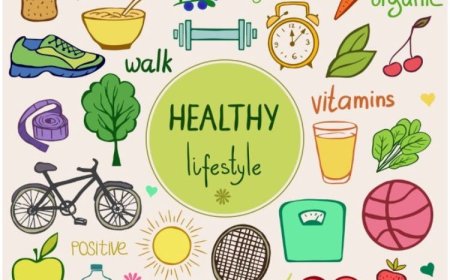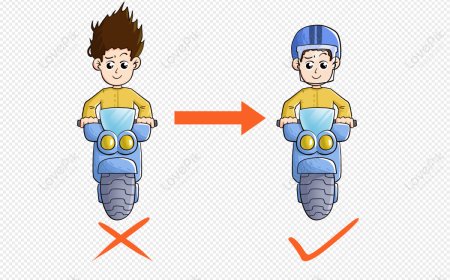"Navigating Nutritional Labels: What to Look For and What to Avoid"
n today’s health-conscious world, understanding nutritional labels is essential for making informed food choices. Nutritional labels provide crucial information about the contents of packaged foods, helping you align your diet with your health goals.

We’ll break down how to read nutritional labels effectively, highlight what to look for, and identify what to avoid to make healthier choices.
Understanding Nutritional Labels
Nutritional labels, also known as nutrition facts panels, offer a detailed breakdown of a food product's nutritional content. They typically include information on calories, macronutrients, micronutrients, and other ingredients. Let’s explore each section of the label and understand its significance.
1. Serving Size
What to Look For:
- Serving Size: This is the amount of food that the nutritional information is based on. It is important to compare this with the amount you actually eat to understand how the numbers translate to your portion.
- Servings Per Container: This indicates how many servings are in the entire package. Adjust the nutritional information accordingly if you consume more than one serving.
What to Avoid:
- Ignoring Serving Sizes: Misinterpreting serving sizes can lead to inaccurate assessments of calories and nutrients, potentially derailing your dietary goals.
2. Calories
What to Look For:
- Total Calories: Indicates the amount of energy you will get from one serving. If you’re managing your weight or tracking caloric intake, this is crucial.
- Calories from Fat: Helps you understand how much of the total calories come from fat. This can be useful for controlling fat intake.
What to Avoid:
- High Caloric Content: Foods with excessive calories relative to their serving size can contribute to weight gain. Be cautious of products with high calorie density.
3. Macronutrients
What to Look For:
- Total Fat: Includes saturated, unsaturated, and trans fats. Opt for foods with lower levels of saturated and trans fats, and higher levels of healthy unsaturated fats.
- Saturated Fat: Limit intake as excessive consumption is linked to increased risk of heart disease.
- Trans Fat: Ideally, avoid foods with trans fats, as they are associated with negative health effects.
- Cholesterol: Aiming for lower cholesterol intake can help maintain heart health.
- Total Carbohydrates: Includes fiber and sugars. Focus on products with higher fiber content and lower added sugars.
- Dietary Fiber: Helps with digestion and can aid in weight management.
- Sugars: Look for added sugars in the ingredients list. Excessive sugar consumption can lead to health issues such as diabetes and heart disease.
- Protein: Essential for muscle repair and growth. Adequate protein intake is important for overall health.
What to Avoid:
- Excessive Saturated and Trans Fats: High levels of these fats can lead to cardiovascular problems.
- High Added Sugars: Consuming too much sugar can contribute to obesity, diabetes, and other health issues.
4. Micronutrients
What to Look For:
- Vitamins and Minerals: Check for nutrients like vitamin A, vitamin C, calcium, and iron. These are essential for various bodily functions and overall health.
- Daily Value Percentages (%DV): Indicates how much a nutrient in a serving of food contributes to a daily diet. Aim for products that help you meet your daily nutritional needs.
What to Avoid:
- Low Nutrient Density: Foods with little to no vitamins or minerals can lack essential nutrients and may not contribute to a balanced diet.
5. Ingredients List
What to Look For:
- Whole Foods: Ingredients like whole grains, fruits, and vegetables should be prominent. These are generally healthier options.
- Less Processed Ingredients: Fewer artificial additives and preservatives usually indicate a more wholesome product.
- Allergens: Check for common allergens if you have any sensitivities or allergies.
What to Avoid:
- Long Ingredient Lists: Extensive lists with unfamiliar or chemical-sounding ingredients might indicate heavily processed foods.
- Added Sugars and Artificial Ingredients: Excessive added sugars and artificial additives can detract from the nutritional value.
Additional Tips for Reading Labels
- Compare Products: Use nutritional labels to compare similar products and choose the one with better nutritional profiles.
- Beware of Health Claims: Marketing claims like "low-fat" or "natural" can be misleading. Always check the nutritional label to confirm the health benefits.
- Watch for Serving Size Changes: Some products may have misleading serving sizes to make the nutrition look better. Ensure you’re comparing like for like.
- Focus on Overall Diet: Remember that individual food items are just one part of your overall diet. Aim for a balanced diet that includes a variety of foods.
Conclusion
Navigating nutritional labels is a crucial skill for making healthier food choices and achieving your dietary goals. By understanding the key components of nutritional labels—serving size, calories, macronutrients, micronutrients, and ingredients—you can better assess the nutritional value of the foods you consume. Pay attention to what to look for and what to avoid to make informed decisions that contribute to your overall well-being.
What's Your Reaction?























































































